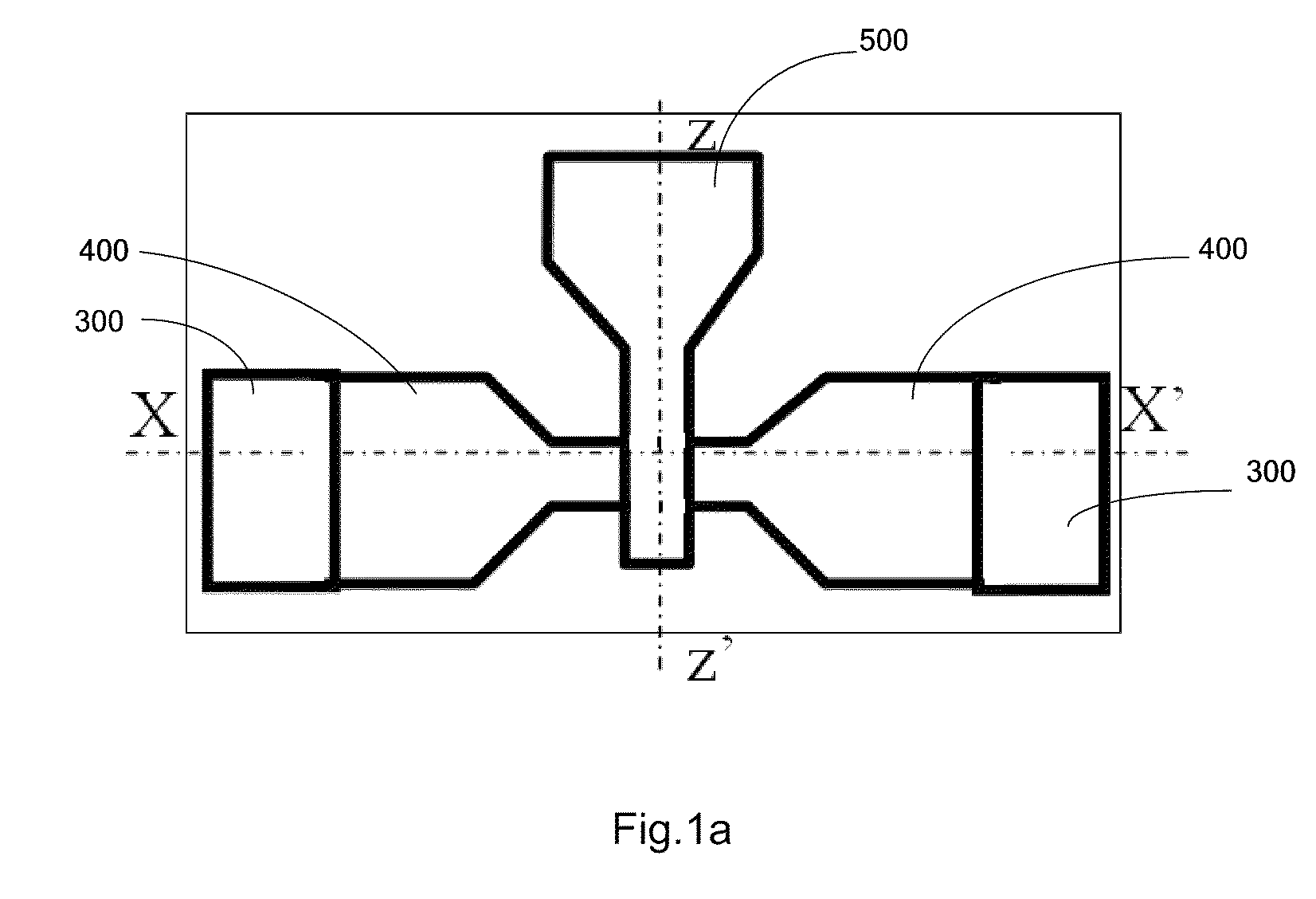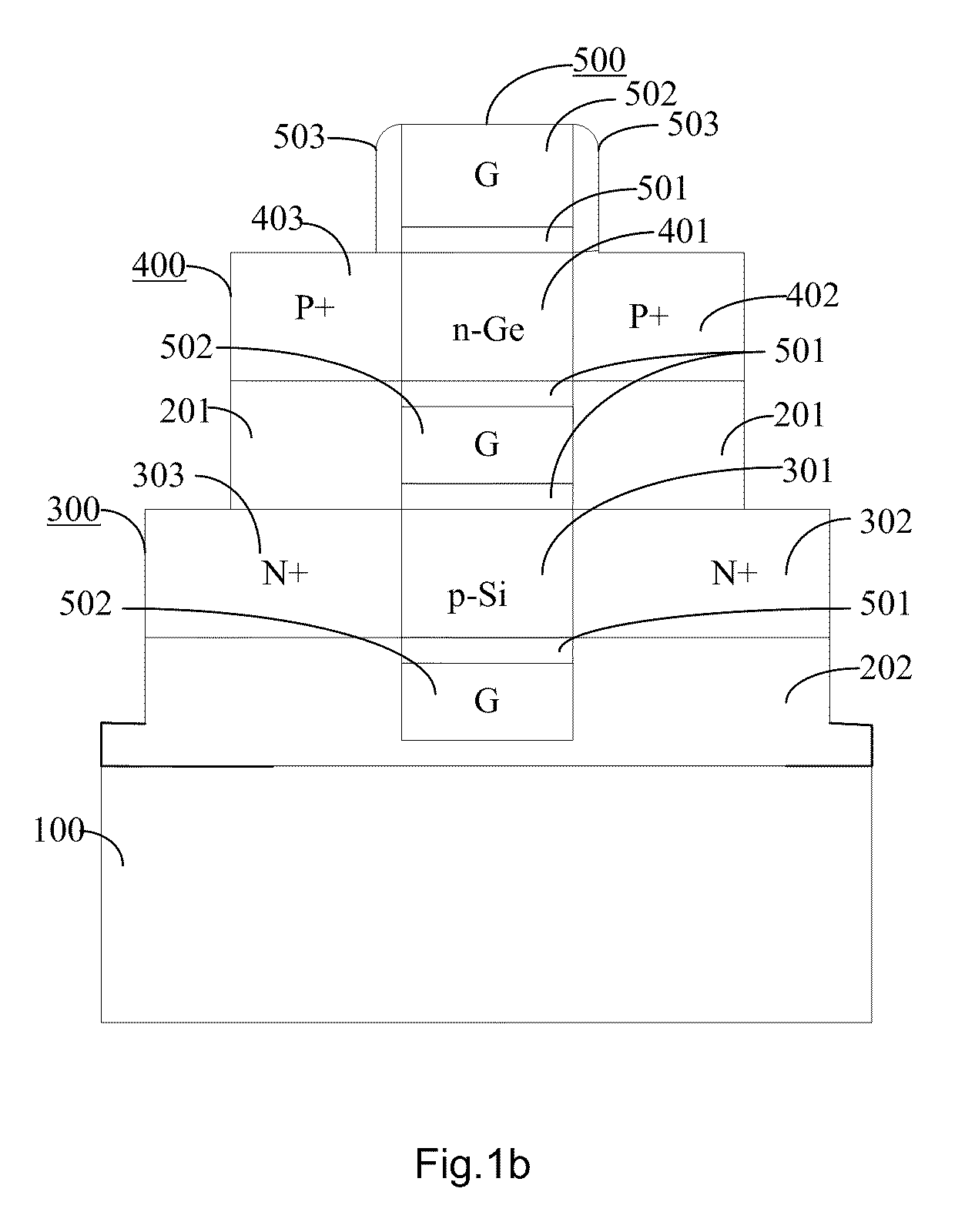Hybrid material inversion mode GAA CMOSFET
a technology of hybrid materials and inversion modes, which is applied in the direction of semiconductor devices, electrical devices, transistors, etc., can solve the problems of low leakage current, low carrier mobility, and degrade device performance, and achieve high carrier mobility, low low-frequency noise, and high carrier mobility
- Summary
- Abstract
- Description
- Claims
- Application Information
AI Technical Summary
Benefits of technology
Problems solved by technology
Method used
Image
Examples
first embodiment
[0020
[0021]Referring to FIGS. 1a-1c, a hybrid material inversion mode GAA CMOSFET of the first embodiment includes: a semiconductor substrate 100, a PMOS region 400 having a channel 401, an NMOS region 300 having a channel 301, and a gate region 500. Each of the channels 401, 301 has a circular-shaped cross section. The channel 401 is preferably formed of n-type Ge and the second channel 301 is preferably formed of p-type Si. The gate region 500 substantially surrounds the surfaces of the channels 401, 301.
[0022]In FIG. 1b, a first buried oxide (BOX) layer 201 is disposed between the PMOS region 400 and the NMOS region 300, other than the gate region 500, to avoid inter-region interference. A second buried oxide layer 202 is disposed between the NMOS region 300 and the underlying semiconductor substrate 100 (i.e. Si substrate), other than the gate region 500, to isolate the NMOS region 300 from the underlying semiconductor substrate 100. The BOX layers effectively reduce the leakage...
second embodiment
[0027
[0028]FIGS. 4a-4c shows another embodiment of the device. The hybrid material inversion mode GAA CMOSFET includes: a semiconductor substrate 100′, a PMOS region 400′ having a channel 401′, an NMOS region 300′ having a channel 301′, and a gate region 500′. The channel 401′ and the channel 301′ each has a circular-shaped cross section, and the channel 401′ is made of a semiconductor material different from the channel 301′. In the present embodiment, the channel 401′ is preferably formed of n-type Ge and the channel 301′ is preferably formed of p-type Si. The gate region 500′ surrounds the surfaces of the channels 401′, 301′. A first buried oxide (BOX) layer 201′ is disposed between the PMOS region 400′ and the NMOS region 300′, other than the gate region 500′, to avoid inter-region interference. A second buried oxide (BOX) layer 202′ is disposed between the PMOS region 400′ and the underlying semiconductor substrate 100′, other than the gate region 500′, to isolate the PMOS regi...
PUM
 Login to View More
Login to View More Abstract
Description
Claims
Application Information
 Login to View More
Login to View More - R&D
- Intellectual Property
- Life Sciences
- Materials
- Tech Scout
- Unparalleled Data Quality
- Higher Quality Content
- 60% Fewer Hallucinations
Browse by: Latest US Patents, China's latest patents, Technical Efficacy Thesaurus, Application Domain, Technology Topic, Popular Technical Reports.
© 2025 PatSnap. All rights reserved.Legal|Privacy policy|Modern Slavery Act Transparency Statement|Sitemap|About US| Contact US: help@patsnap.com



